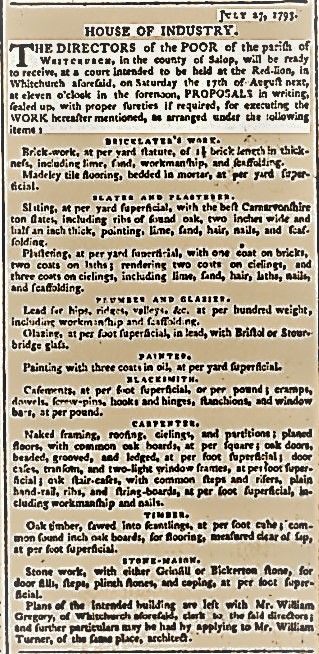The first documented poor house in Whitchurch was situated in Newtown, a road on the western edge of Whitchurch.
The earliest record of a workhouse in Whitchurch dates from 1791 and describes it as consisting of two small houses joined together by a third building which housed 60 men, women, and children. The building was inspected, following an Act of Parliament the preceding year, by Mr J. Scottock who drew up a plan and submitted the following report:
The buildings for the reception of the the poor of the parish of Whitchurch in the county of Salop are situated in the town of Whitchurch and consist of two small houses (A and C), a room called the lower house (K) and a building originally erected for the waterworks (B). There are at present 60 men women and children in these buildings, and I am informed by the person who farms the poor that he pays 140 paupers besides. The room marked (K) is timber, thatched and very very old as well as out of repair, adjoining is the privy and pigsty which is offensive. The gardens contain one fourth of an acre.
For these reasons I am of the opinion that the said buildings will not admit of such alterations and admissions as will obviate the inconveniences complained of.
The inspector who wrote the report condemned the building and a move led by the Rector, Francis Henry Egerton, was made to set up a new house of industry.
In 1794 a house of industry was built on a greenfield site just outside the town on Claypit Street. It was designed by local architect William Turner to house 150 inmates. The design included workrooms, schoolroom, two wards for the sick and a mortuary.
Workmen were sought to contract for the work as detailed in the 1793 advertisement below

